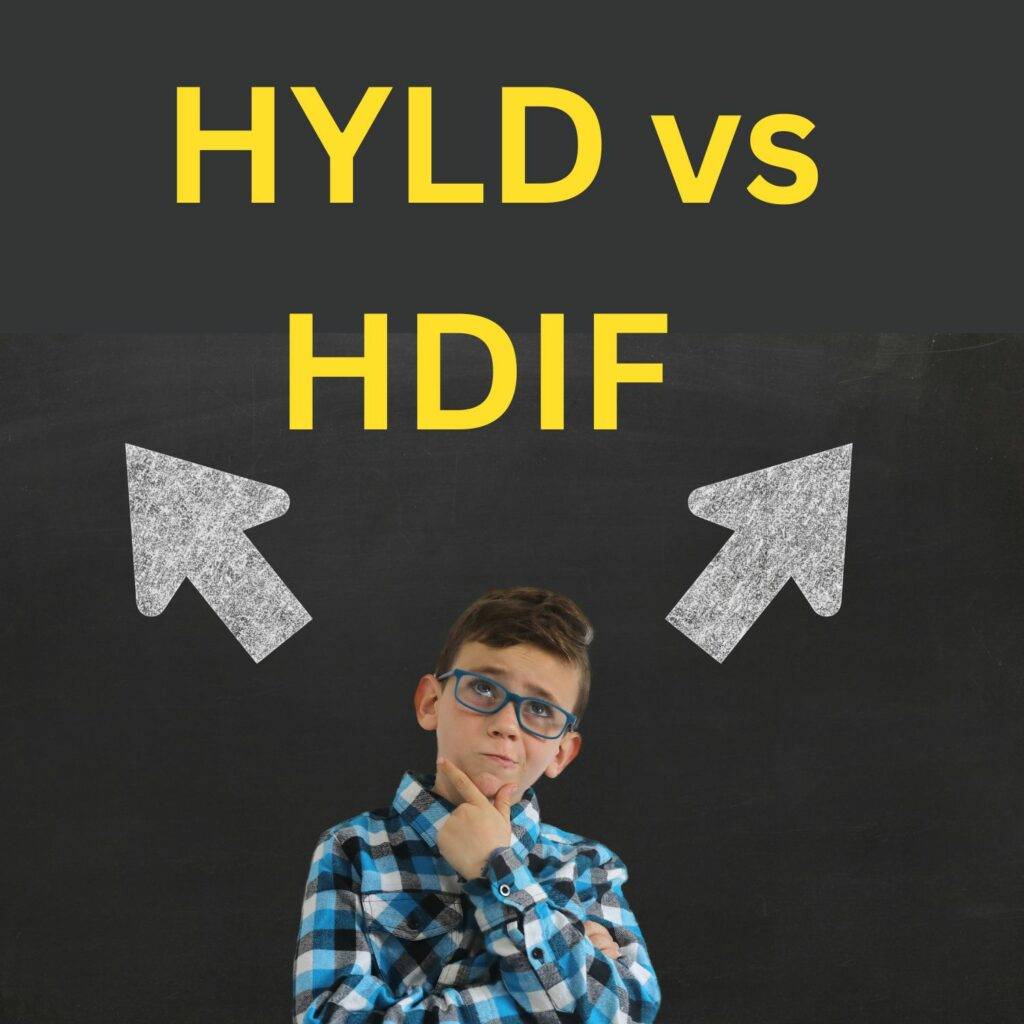If you’re seeking enhanced income options, Hamilton ETFs offers two interesting covered call ETFs: HYLD and HDIF. These ETFs share a focus on income generation, but understanding their distinctions is key when choosing which might align better with your portfolio (HYLD vs HDIF).

Executive summary
| Feature | HYLD (Hamilton Enhanced U.S. Covered Call ETF) | HDIF (Hamilton Enhanced Multi-Sector Covered Call ETF) |
|---|---|---|
| Issuer | Hamilton ETFs | Hamilton ETFs |
| Focus | U.S. stocks (primarily S&P 500) | Canadian stocks |
| Strategy | Covered call options for income enhancement | Covered call options for income enhancement |
| Geographical Exposure | United States | Canada |
| Currency Risk (for Canadian Investors) | Yes (USD exposure) | No |
| Potential Sector Differences | Heavier tech weighting typical of S&P 500 | May have heavier energy and financials weighting |
| Considerations | Preference for U.S. market, currency fluctuations | Preference for Canadian market, domestic focus |
The Basics
HYLD (Hamilton Enhanced U.S. Covered Call ETF): HYLD targets high income by writing covered calls on stocks primarily within the S&P 500 index, offering investors exposure to the U.S. market.
HDIF (Hamilton Enhanced Multi-Sector Covered Call ETF): Similar to HYLD, HDIF also uses a covered call income strategy but concentrates on equities within the Canadian market.
The Hamilton Approach
Since HYLD and HDIF are both issued by Hamilton ETFs, they likely use similar covered call strategies. However, the differences in their underlying holdings lead to some key considerations:
Geographical Focus: HYLD provides exposure to the broader U.S. market, while HDIF remains within Canada. This impacts potential currency fluctuations and exposure to the unique economic cycles of each country.
Sector Differences: The S&P 500 (HYLD’s focus) and the Canadian market (HDIF’s focus) could have varying sector weights. For example, the Canadian market often has a heavier energy and financials weighting compared to the U.S.
Yield and Risk
Hamilton ETFs are known for their focus on income generation. But remember:
- Covered calls can limit upside potential if underlying stocks experience substantial growth.
- Market volatility and stock price declines can negatively impact premiums or even lead to distribution reductions.
Considerations for Choosing
The optimal choice for you depends on:
Geographical preference: Where do you want your primary market exposure?
Sector interests: Do you have specific sector preferences that better align with the U.S. or Canadian market composition?
Currency considerations: (for Canadian investors) HYLD has U.S. dollar exposure, introducing currency exchange factors to consider.
Risk tolerance: Are you willing to accept potential distribution fluctuations in pursuit of higher income potential?
Final Word

HYLD and HDIF, as Hamilton ETFs, offer ways to enhance income. However, they’re not designed for massive capital gains. Before investing, do your homework to understand their strategies, risks, and how they fit into your overall financial plan.
Disclaimer: This blog post is for informational purposes only and should not be considered financial advice. Seek guidance from a qualified financial advisor for personalized investment recommendations.
Let me know if you have any other aspects you’d like explored further!

